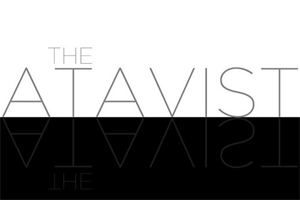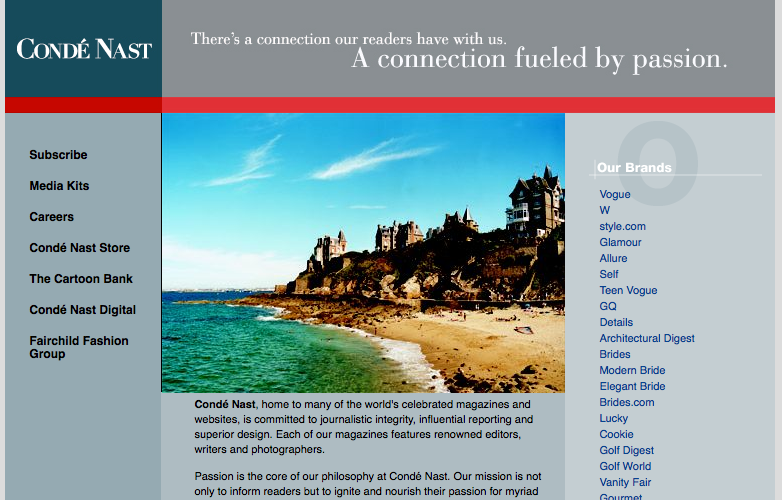Q&A with Evan Ratliff, aka The Atavist
Notice: Only variables should be assigned by reference in /home3/elprofem/public_html/wjorg/blog/wp-content/themes/wj-theme/functions.php on line 526
Comments off
NOTE: Originally published on Online Journalism Review: http://www.ojr.org/ojr/people/webjournalist/201104/1968/
There are those that blame the digital age and the Internet as the cause of our short attention spans and disinterest in longform storytelling. Then there are those that embrace the technology and develop tools or a platform that harnesses the tech to not only coexist with longform narrative, but also advance it.
For this week’s post, I spoke with Evan Ratliff, freelancer for publications like Wired, The New Yorker, and others, turned digital entrepreneur and – if you believe some of the press – possible savior of the longform narrative with his new project, The Atavist.
NOTE: We met on a collaborative document and you can playback our unedited conversation here.
 Evan, thank you for taking the time to “meet” for a quick chat about the project you are working on.
Evan, thank you for taking the time to “meet” for a quick chat about the project you are working on.
My pleasure!
So, let’s start there… can you describe what The Atavist is?
Sure, so The Atavist is a kind of hybrid publication: We sit right in between magazines and books. From the magazine angle, what we do is called “longform nonfiction” or “longform journalism:” We produce stories that are 6-7,000 words and up, all the way to maybe 30-35,000. All nonfiction, all written by people who have spent weeks or months reporting them. They are published digitally, through our app for iPad/iPhone, through Kindle (Kindle Singles, which we can talk about), and Nook. From the book perspective, they are almost like short ebooks.
We also license our software, but that’s our more non-journalism side of things so maybe less of interest here.
How did this idea come about? You have a background in longform storytelling… but how did the idea of an app and this “concept” of a custom storytelling platform come about?
It started with a pretty basic, and unformed, idea: Was there some way to do longform writing/journalism online. It was an idea I’d been thinking about for a while, but not doing much if anything about — I applied for a Knight foundation grant but didn’t get it, in maybe 2008 (2007? Can’t remember). Anyway, originally Nick Thompson, my editor at Wired, and I were just saying that there must be some way to do longform that was more designed for the digital world. Instead of just translated straight from a magazine. The real conceptual ideas of how it might work didn’t come about until we sat down with our other partner, Jefferson Rabb, who has both the design sensibility and coding chops to actually conceive what something like that might look like. It was in talking to him that we stopped talking about the Web and started talking about an app.
Technically speaking, you could do these custom, interactive stories on the Web… what made it appealing on the iPad, Kindle, etc.?
I think that first, we just wanted to kind of get away from the idea of people reading it at their desktop, where they are skipping from one bit of information to the next all day. The emergence of phones—and actually we first were looking just at smart phones, noticing how much we and other people were reading on them—and then tablets, ereaders, etc, pointed a way to a different kind of digital reading experience. Marketing types now call it the “lean back” experience, which I don’t cotton to that much but the point is the same one we were going for: this is a different kind of reading than you do on the Web.
Full disclosure, I think the concept and platform is a fantastic idea… and it’s an ideal mashup of interactive/digital and traditional storytelling. I’ll embed the video from the site, but can you briefly list the features/media/interactivity/etc. a user would find in a “typical” Altavist story?
So, I should probably first offer the caveat that of course you get different versions of Atavist stories in different environments. On Kindle—for the moment—you’ll get just the full text of the story, and photos, maybe some footnotes. In our app, the standard features are a bit different, just because we are able to control the whole environment and use multimedia however seems to suit. The standard features on every story in the app are: the text and full page photos (of course), an audiobook version of the story (you can flip back and forth between reading and listening), usually some elements of other media (music, video, woven into the narrative), and then what we call inline extras: Parts of the story that serve as a kind of substrate. These are links to characters, photo galleries, maps, timelines, audio clips that you can turn on and off. If they are on, you tap a word or phrase and the feature pops up.
I purchased and read your piece, Lifted, and thought it was a natural experience… I did find myself torn between reading or listening to the audio version of the story (I am a podcast junkie, though). Granted, you’ve just launched, and this is a brand new form of storytelling… custom-crafted, interactive pieces for each story. What new things do you have to factor in that you never had to think about in the past… like when you wrote a Wired piece?
It’s true, all these new questions arise pretty quickly, and we’re still trying to figure out how to answer them. Take the video, for instance. That piece Lifted had a critical piece of video, the surveillance tapes from the heist that was portrayed in the story. I wanted that to form the lede of the piece. Which instantly created two problems; no, three: 1. How do you write a kind of secondary lede, to follow a piece of video? Do you assume that, with a written lede, someone will have read everything up to that point? Or might they have skipped part of the video? 2. What to do on other platforms, where the story would not have the video? The text itself had to work as an intact narrative, without the video. And 3. What to do about sound? The video had no sound, so it can’t really be “included” in the audiobook version.
Those are all questions that obviously wouldn’t come up when writing a magazine place, not to mention: where to put it, how much to use, how to edit it, whether and how to score it, etc. etc.
What’s also exciting, is that those questions were tied to that one story… they may not be asked again or exactly the same in another Atavist story, right? Or the answers would be different, depending on the story. With what you’ve produced so far, can you say what makes for a good Atavist story?
Right, some of them may be moot in other stories. We had another piece with a lot of music in it, and it had a whole set of other questions around the soundtrack that haven’t come up elsewhere.
I think we’re still feeling it out when it comes to what works well. There’s no question that the story—as in the real plot and characters portrayed—is always going to make the biggest difference.
Well, let me ask a basic yet complex question… how is this whole thing going?! Are you a zillionaire? Is this a new revolution you are a part of? Have you ever thought you’d an entrepreneur? How’s the experience of launching The Atavist been?
Let’s just say this: If things keep going like they are, I’m pretty sure I’m going to be able to get a new chain for my bicycle. Which I think we both know that only a hundredaire could do.
HA! I love that journalism pays the same in all platforms. But it’s a passion project with endless possibilities, no?
Indeed. But there is a financial element that is not as bleak (I hope) as I tend to joke. So, there’s a few levels I could talk about how it’s going.
Without a doubt, you have a business model that makes sense… in fact you have two. Individual stories and licensing.
Yes, so let’s take the stories first. We knew going in, and nothing has yet proven us wrong, that it’s very difficult to build up a readership from scratch. If you recall the heyday of big magazine launches, they would do things like buy up subscriber lists and just send them the magazine, and lose millions of dollars trying to gain a substantial readership. Our marketing budget so far topped out at right around $0. So we’re pretty pleased with the number of readers we’ve had (everybody asks; we always say “tens of thousands total, for all the stories,” but not much more than that). We’ve used the first few stories to get enough revenue to fund some more, which was our first milestone we were aiming at. Next up is proving that this sort of small-scale, small-team version of longform journalism can consistently make the money to be sustaining. That means getting more readers, and getting them to come back.
On the licensing side we haven’t announced anything yet, but we’ve found a huge, frankly kind of shocking to us in size—we can’t deal with the influx of interest at the moment—interest in utilizing the app platform and CMS for different types of publishing. Some of them you’d only loosely think of as “publishing:” in the financial field, the medical field. So we are really hoping that that side can help support the journalism side while we are starting out, to give us time to grow the readership.
And maybe even pay ourselves something some day!
It will be a new, gold chain on that bike! Seriously, it’s no easy task what you’ve done. Congratulations, by the way. Do you have any lessons you’ve learned that you can share with those thinking about experimenting, developing an idea?
Solid gold. Thanks! It’s been a bit harrowing at times.
Well, a couple things I learned quickly: In the digital world, if that’s where your experiment is going to exist (and most do these days, I suppose), you have to find a designer/developer who understands what you are trying to do. In our case, we got incredibly lucky with Jefferson Rabb, who not only understood, he actually was able to create it in ways we hadn’t thought of. Now, if you are one of those new-style journalists that can do it all: write and report and code and design, well, that’s amazing. But if not, befriend great coders! Find ones who like to read!
The second big thing is—and I think I probably used to scoff a little at “entreprenurial journalism” courses, or that sort of thing (I didn’t go to j-school, so it’s all a little foreign to me)—knowing how to do really mundane things to make a business work is actually incredibly useful. I’ve lost hours, nay, weeks, months, and lots of sleep, and probably hair, trying to puzzle out issues that were easily solved by someone who knows the first thing about running a business. So if you can get that somewhere, through experience or coursework or whatever, it’s going to save a lot of time that you could be spending on the thing you love, which is the writing and editing and publishing.
Great advice… you mentioned find developers who “like to read” … you spoke at SXSWi about longform storytelling and a lot of articles about The Atavist focus on the “death of longform” and how this may “save it” (no pressure, by the way). What do you think of the tltr (too long to read) culture. Is there a real threat here? Is this hype? Or is it all true and you found the silver bullet to save the world (no pressure).
Yeah, I love those stories…
To be really honest, I have no idea. I’m always asked, in panels like that, what I think of it, and I hate being the guy who just makes shit up because they happen to be connected to a field. My answer is: I don’t think anybody knows, and mostly the folks who pontificate about attention spans and reading and news are substituting what they do and want for what “readers” do and want. At some basic level, obviously we are ingesting a lot of information in shorter chunks, more constantly, and all of that, which is written about ad nauseum. At another basic level, people still buy a lot of books. People still buy a lot of nonfiction books. People are buying more and more ebooks, in huge numbers. So for us, I don’t really care if at some broad level, some people are saying “nobody reads long stuff anymore.” It’s just not true. The only question for us is: Can we get the people who do read long stuff to read our long stuff. And I think there are plenty of those people out there, and (as Byliner, newly launched, is also proving), maybe even untapped folks who are ready for / looking for great stories of this style and length.
I completely agree with you. People are consuming more media in more ways. But, a good story is still a good story. Make sure you are using all the new — and old — storytelling techniques to engage your reader/listener/viewer/user.
Right, and it’s the same with multimedia. People say: “Readers don’t really want videos and audio in their story.” By which they mean, they don’t. But some people do. And if the story is better told with it, why not try to find that balance that makes for the most gripping possible narrative?
So, I just “tweeted” (I feel awkward typing that word rather than saying it) out that I was chatting with you and am crowdsourcing any questions. I got one from @mattvree, who asks, “Any plans to move beyond just longform written journalism, and expand to multimedia and documentary?”
Not at the moment. We’ve got our hands full with our current efforts. Of course we think about the possibility of expanding into different areas down the road. But we feel like we’re barely getting started with our current approach, and it would be madness to try and take on new types of efforts before we feel we have the old one nailed. One thing we may be doing is a piece or two that are more visual than they are textual. So the current balance of text-to-image is almost reversed, and the story is told primarily through visuals. But that’s still in the works.
Let me ask you some questions that I, some type of Web journo nerd, routinely like to ask other journos.
First, I’m always fascinated with names/branding, so where did the name The Atavist come from? I assume it wasn’t inspired by the metal band Otep, which put out an album with the same name (thank you Wikipedia).
It’s out today!! We’ve really been anticipating the release date, because our Twitter stream is filled with absolutely insane OTEP fans who have been counting down the days for almost two months.
HAHAHA! Okay, so, what’s the backstory to your use of The Atavist?
 But no, not inspired by. I started using it as my personal domain years ago, it’s a tiny sideways allusion to Hunter S. Thompson‘s work; atavist and atavistic are words that, if you read a lot of HST (as I once did), he drops in quite often. And then when we wanted to start something, we went through literally hundreds of possible names. Actually Jefferson once made an app that just randomly generated names for us. But then we came back to it, and decided that the actual meaning, a biological feature that’s disappeared and then suddenly reappears, had some salience. Storytelling reappearing in the digital realm, or whatnot. And it’s fairly unique, which means people can find it in the app store — more important than you’d think. Some people seem to hate it, but overall it seems like people are ok with it.
But no, not inspired by. I started using it as my personal domain years ago, it’s a tiny sideways allusion to Hunter S. Thompson‘s work; atavist and atavistic are words that, if you read a lot of HST (as I once did), he drops in quite often. And then when we wanted to start something, we went through literally hundreds of possible names. Actually Jefferson once made an app that just randomly generated names for us. But then we came back to it, and decided that the actual meaning, a biological feature that’s disappeared and then suddenly reappears, had some salience. Storytelling reappearing in the digital realm, or whatnot. And it’s fairly unique, which means people can find it in the app store — more important than you’d think. Some people seem to hate it, but overall it seems like people are ok with it.
Second, this has become one of my standard questions…. in these “tough times,” why are you a journalist? What drives you and keeps you going in this field?
For me, it’s probably not as noble as it is for some journalists. On the writing end, I just really like digging into things, getting obsessed with topics, meeting fascinating people, and getting to go interesting places. On the publishing side of things, now I want to give other writers the chance to do all of those things. Of course sometimes the more noble aspects are part of it: shedding light on an important topic, investigating some malfeasance. And sometimes the least noble parts: seeing ones name as a byline. But mostly it’s just fun to go out into the world, find a story, and then figure out how to tell it.
And as someone who has freelanced for 10 years, it’s always seemed like tough times. It’s always full of rejection, and failure, and dry periods, and occasionally empty bank accounts. So I don’t see much difference now from when I started (although of course I realize other folks do).
Well, Evan… thank you for taking the time to chat with me. I hope this format wasn’t too awkward. I really enjoyed out conversation and wish you luck on your current and new adventures.
Thanks, I enjoyed it!


